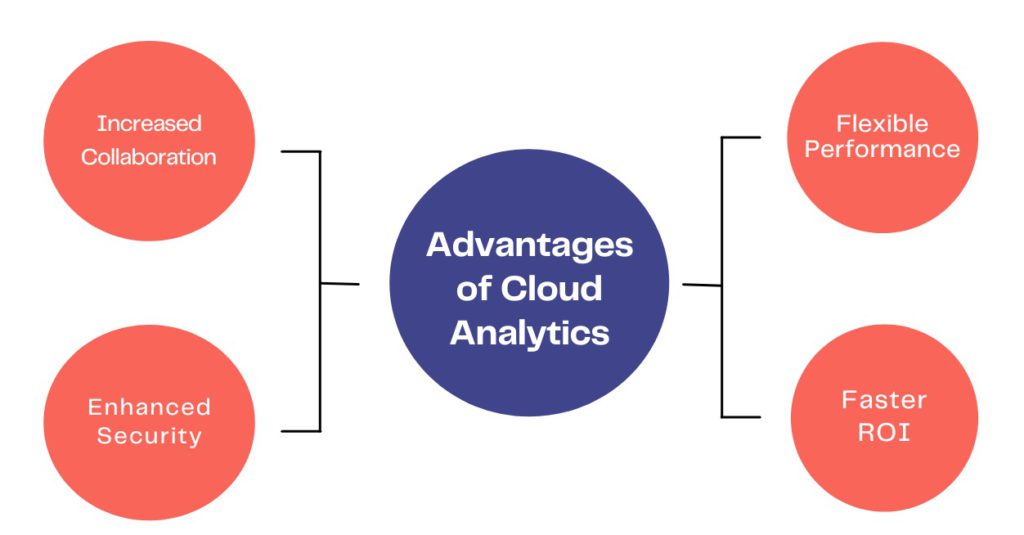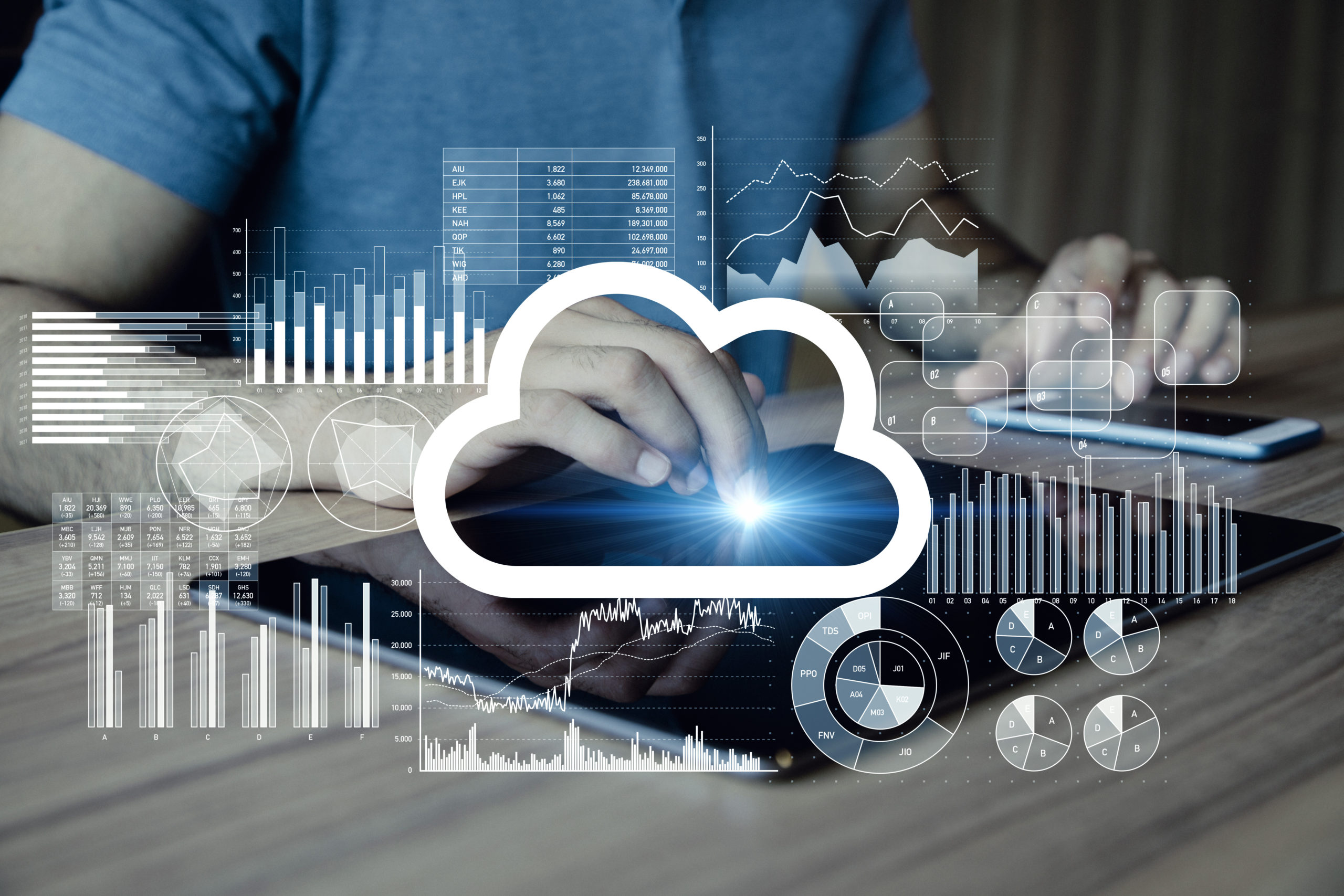Cloud data analytics is interrelated to AI, deep learning, and machine learning. Many industries, such as oil and gas, security, scientific research, IoT, etc., can benefit from cloud analytics to drive better business value.
In data analytics trends for the 2022 forecast, the Express Analytics team has said cloud data analytics will be big in the next year.
What is Cloud Data Analytics?
This refers to the use of cloud-based tools and services to analyze data. This can include data stored in the cloud, as well as data that is streamed to the cloud for analysis. It can include data from on-premises applications, mobile devices, and sensors.
Cloud analytics involves analyzing data in the cloud with analytic algorithms. In order to identify patterns in data and extract new insights, it combines scalable cloud computing with powerful analytics software. In the last two years or so, more and more businesses rely on data analysis in the cloud.
In many cases, the data being analyzed is created in the cloud, or even on an enterprise’s own systems and is streamed to the cloud for analysis. This can include video from security cameras, social media posts, log files, and more. As data becomes a larger part of modern computing, it makes sense that more and more tools will be developed to analyze it.
Cloud data may be analyzed by another third-party service. This may include an enterprise’s own analytics infrastructure or a service provider.
Types of Cloud Analytics
It is a broad category that refers to all of the analytical techniques used to analyze data. Depending on the type of cloud analytics solution, users will have different requirements in terms of capabilities and business needs.
For example, on-demand analytics services for real-time decision-making in a closed-loop system are designed for organizations that need to quickly respond to real-time events. On-demand analytics services are usually used in mission-critical industries and business processes.
Because these organizations deal with very rapid changes in their environment, timely decision-making is necessary.
Make Your Company Move Towards Cloud Modernization
On-demand analytics are also used by organizations that have to execute specific tasks at specific times. For example, in the retail industry, organizations must be able to scan the QR code on a product’s packaging at any time and place in order to retrieve the product’s price, description, and location.
Such an application has to be able to make decisions based on the current location of the person scanning the QR code and any modifications that have been made to the product’s information since the time it was scanned.
4 Types of Cloud Analytics
Analytics in the public cloud: When organizations need to act quickly and have limited resources, the public cloud is the way to go. It’s cost-effective, can handle big data sets, and can also leverage cutting-edge technology.
Analytics in the private cloud: This gives your organization a tighter and even more secure way to analyze data.
Hybrid cloud: Data may be stored on both cloud and on-premises systems. It is this data that can be analyzed using tools running on the cloud.
In an on-demand cloud analytics service, a combination of public and private infrastructure is used to deliver services.
Private hardware and software are used to secure information and enable secure connectivity with end-users.
Edge cloud: The edge cloud is where data is being analyzed in real-time as it arrives, rather than at a point in the future. It may include a server system, a sensor, a handheld device, or other mobile devices.
How is Cloud Data Analyzed?
There are many ways of going about this. For example, the analysis and correlation of data may be performed by a service provider. Or, the analysis may occur on-premises and then be provided to the service provider in a format that can be stored in the cloud.
The service provider analyzes the data, creates statistical summaries, and then delivers that information to the end-user. This may be provided on a continual basis, in real time, or periodically.
Off-the-shelf analytics, on the other hand, is more suitable for businesses in the retail industry, manufacturers, and energy sectors.
Traditional cloud providers are companies that create or host cloud infrastructure in their own data centers and usually provide both private and public cloud services.
What are the Components of Cloud Analytics?
Cloud analytics has three main components:
a. Data collection: data sources (such as sensors, databases, text analytics, etc.) and data formats (such as text, audio, video, and image) are used to gather data.
b. Data processing: the data is stored in a cloud-based system and then analyzed by machine learning techniques and other techniques. Results are stored in a data warehouse and/or other databases.
c. Data visualization: the data may be displayed to a user in a variety of formats (graphs, charts, etc.) so that they can make decisions regarding the data.
Now, when it comes to business decisions, many of you will immediately think about whether you should operate in the cloud or not.
Technology has come a long way so choosing cloud infrastructure for your business is now the new normal. A lot of new options and solutions have become available to make cloud computing more efficient, more flexible, and more secure.
Choosing the right cloud technology for your business is a good start for making the necessary strategic decisions that can change your business completely.
Many of the major cloud vendors offer elastic and scalable technologies that can be used to build applications and infrastructure as needed.
These new and emerging technologies are usually easy to integrate into your existing IT infrastructure. Many of them can work together with other systems that you already have in place.
Make Your Company Move Towards Cloud Modernization
Benefits of Cloud Analytics

Cost: The major benefit of cloud computing is the cost. Some estimate that if you have a small-scale business, then you can reduce your infrastructure costs by up to 90 percent.
This is because, with cloud computing, you only pay for what you use. Hence, the service providers often provide tools that help businesses save on their IT infrastructure costs.
Quick Deployment: Deploying apps and infrastructure to the cloud can be easier than on-premise technologies.
In fact, they provide a quick turnaround. Cloud deployment is a service you can use on-demand when needed. This gives you the ability to quickly deploy when your business needs it and remove it quickly when they don’t.
Simplicity: Cloud computing uses the latest technology and best practices. This makes it possible to deploy apps and infrastructure that are complex but easy to manage and maintain.
Collaboration: The benefits of cloud computing can be passed on to the rest of your company’s workforce.
With the increased communication and information access that you have on the cloud, there is less need for employees to have a separate workstation or a shared computer to collaborate.
Efficiency: Cloud computing allows you to allocate resources where they are needed most.
With the increased functionality and flexibility of the cloud, it is possible to create a more efficient system that is able to react faster and delivers real value at every level of your business.
Speed: With cloud computing, the data center is moved to the core of the organization.
The cost savings and speed of delivery allow you to create services that are meant to get more done with less human effort.
In conclusion: Now is the time to transform your IT infrastructure and the way you run your business. Businesses that make the switch to cloud computing will see the benefits of reduced operating costs, increased functionality, and improved performance.
Build sentiment analysis models with Oyster
Whatever be your business, you can leverage Express Analytics’ customer data platform Oyster to analyze your customer feedback. To know how to take that first step in the process, press on the tab below.
Liked This Article?
Gain more insights, case studies, information on our product, customer data platform


No comments yet.